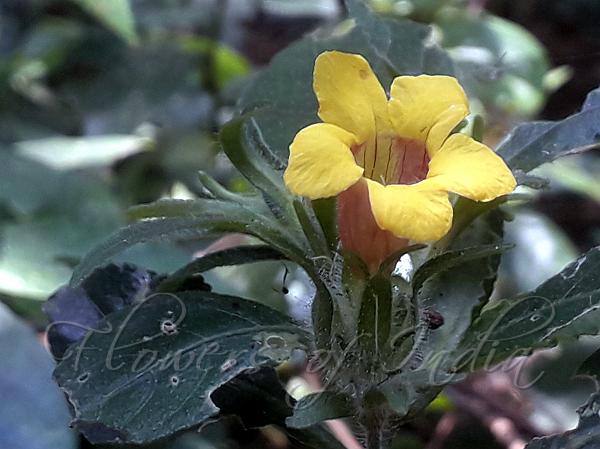|
| East-Indian Yellow Coneflower |
|

|

|
|
|
|
Photo: |
Botanical name: Strobilanthes scaber Family: Acanthaceae (Acanthus family)
Synonyms: Ruellia scabra, Hemigraphis aspera, Strobilanthes asper
Synonyms: Ruellia scabra, Hemigraphis aspera, Strobilanthes asper
East-Indian Yellow Coneflower is a shrub upto 6-8 ft
tall, gregarious, with stem velvet-hairy, joints much swollen. Leaves
are 7-12 by 3.5-6.5 cm, elliptic-obovate, tapering, rounded toothed,
rough, thinly leathery or hairless on maturity. Lateral nerves are 6-8
on either half, nearly parallel, arcuate; base-wedge-shaped; leaf-stalk
1.5-25 cm. Flowers are yellow, borne in hairy dense spikes, often
clustered, Bracts are lanceshaped, green; bracteoles 6 mm,
linear-oblong. Calyx is hairless, tube swollen, sepals rounded. Stamens
do not protrude out, filaments hairy near the base. Ovary is glandular
at the tip; style almost hairless. Capsule is about 1.2 cm, 4-seeded.
Seeds are discoid, 2.5 cm in diameter, elastic when wet. Flowers are
eaten cooked in Garo Hills. East-Indian Yellow Coneflower is found in
North to NE-India, Myanmar, Vietnam, Bangladesh. Flowering:
February-June.
| Identification credit: Bubai Bera | Photographed in Chilkigarh, West Bengal. |
• Is this flower misidentified? If yes,